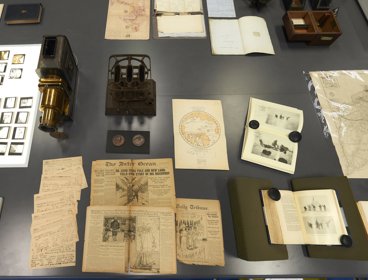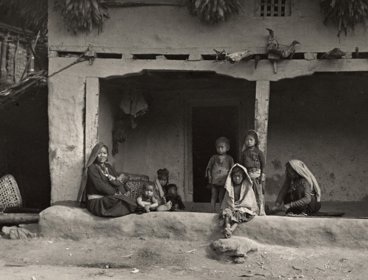In 2022-23 we awarded three Wiley Digital Archive Research Fellowships, enabling the Research Fellows to access and undertake research using the hundreds of thousands of items from our historic Collections that have been digitised as part of the Wiley Digital Archive project.
With their time in the archives coming to an end, we’re speaking to each of our Research Fellows to find out more about their projects. This time we’re hearing from Kate Simpson, who has been researching David Livingstone’s expeditionary collecting to identify specific narratives around the objects he acquired, his reasoning for collecting them, and the stories and names of those who he acquired them from.
We caught up with Kate to hear about her research, why she applied for the Fellowship and what she’s found so far in the digital archives.
How did you come to be interested in your current research topic?
European travellers in Africa in the 19th century often published their experiences upon returning to the imperial metropole. They wrote narratives that supported their socio-cultural beliefs, and they often corroborated these stories with geographically and ethnically coded objects as evidence that they had acquired on their travels. I wanted to explore the ways in which people’s personal belongings have their stories muted to become imperial signifiers. I was interested to see if I could point to specific moments in which these belongings changed – was it in the notes and letters that came back with objects, was it in the letters and articles published by the Society, or was it something even more intangible?
What made you apply for a WDA Research Fellowship?
I had known about the project to digitise the Society’s Collections, and that that digitisation also included ATR (automated text recognition) which would help me skim through document content more efficiently than reading the original handwriting. The nature of the digitisation across the whole of the Society’s Collections provided an opportunity to scope these digital spaces and evidence the people and belongings I know from my prior research to be core to stories of European travel in Africa. I also saw this as a unique opportunity to delve into what the digitised archive had to offer in a way that was deeper, richer and more serendipitous than if I had been onsite and had actively chosen what I wanted to see. For example, during this research I found a very rare, short Italian biography of David Livingstone’s wife, Mary Moffat Livingstone, something I would have unlikely chanced upon had I been selecting individual items to view.
How does your project sit within your wider research interests?
I have studied European travel to, and writing about, Africa in the 19th century for a long time. David Livingstone was one of the most well-known of these travellers. Livingstone’s three books Missionary travels (1857), Narrative of the Zambezi expedition (1865) and The last journals of David Livingstone (1874), had a profound impact on how people and cultures from southern and central Africa were seen by anglophone nations. Livingstone brought back a wealth of objects, items that had belonged to people, that he had purchased or acquired – things which reified imperial ideas around cultural alterity, strangeness and difference. I am using these new ways of accessing the archive to reclaim the stories of belongings, not as ‘artefacts’ – geographically sited and which delineate and evidence written records of European travel – but to find in these objects something which reflects the original wearer, owner or creator.
Hand-in-hand with my researcher role, I am also a curator, and as a curator two issues bother me. Firstly, the hugely reductive and exclusionary interpretation and representation of objects belonging to women. And, secondly, the way 19th century domestic African objects, which are associated with women, are often presented as just representing a region or people rather than acknowledging the individual.
This project has enabled me to explore one primary route of information into Britain from Livingstone. And to understand how his specific engagement with the Society continues to affect our understanding of Livingstone and the people, both present and hidden, in the stories and objects he brought back. The research from this Fellowship is allowing me to pick apart how insidious and pervasive the erasure of African individuals, particularly women was, in the stories of exploration.
What are you hoping to find in the digital archives?
The six-month WDA Research Fellowship has provided me time to use a slow digital critical practice to comb through the digital archive with a mixture of concordance and, importantly, freely browsing across the content of the site. Such a gentle approach has allowed me, as the researcher, to thoroughly engage with all available digitised archival sources to see what can be found when first glance (keyword search) might suggest there is little there. And to then understand what, if any, patterns, concepts or deep structures are evident.
Livingstone is a relatively unique British traveller, as we have a lot more of his own writings than we do for many other travellers at the time. As such, it is possible to follow his stories and see how, from field diary to journal to manuscript draft to publication, the story of his journeys and the people he encountered changes. In the Wiley Digital Archives I am following the journey his stories, and the objects he sends back, take. Ultimately, I hope to identify specific narratives around objects acquired by Livingstone, the reasons he gave for collecting objects and the stories and names of those who he acquired the objects from.
Find out more about our Wiley Digital Archive Research Fellowships




